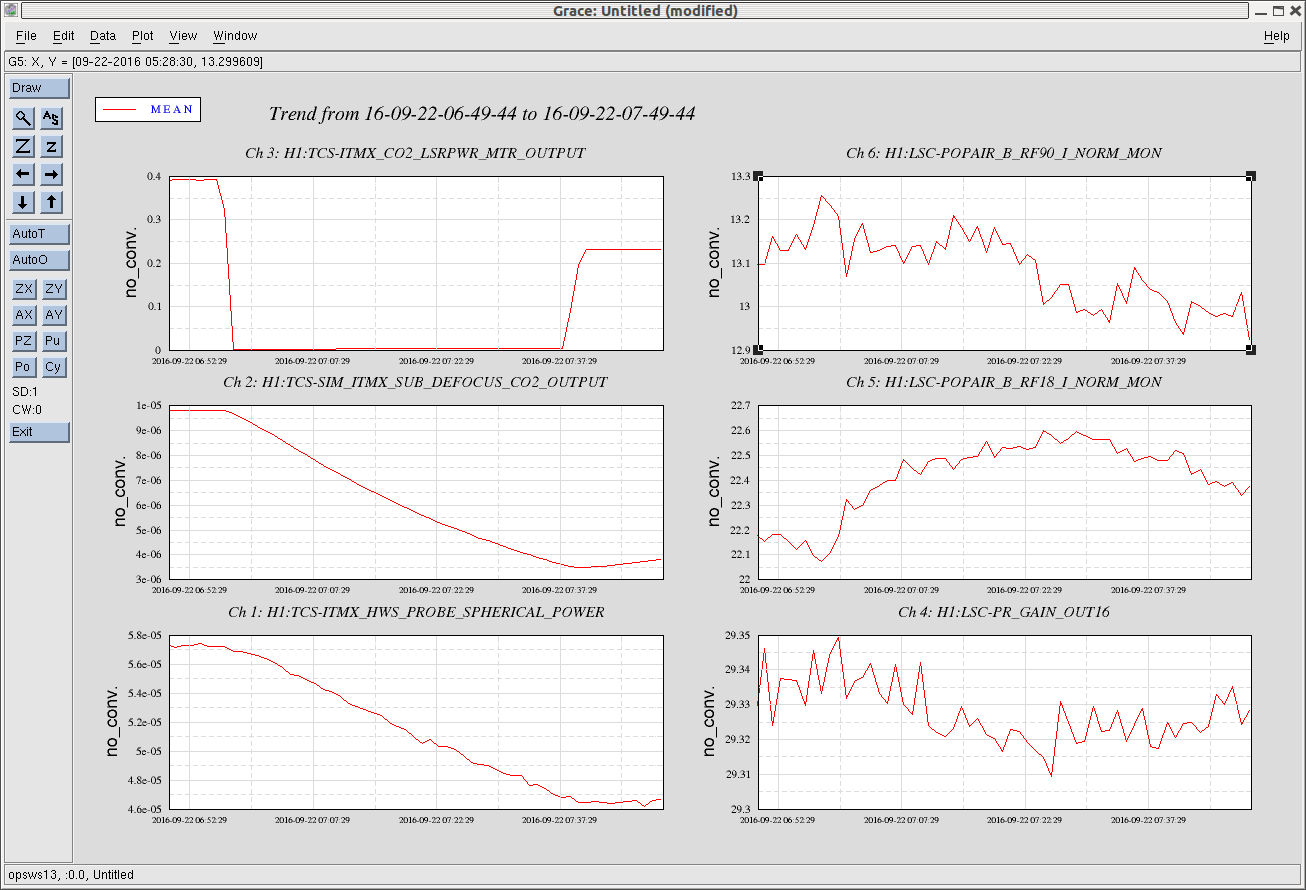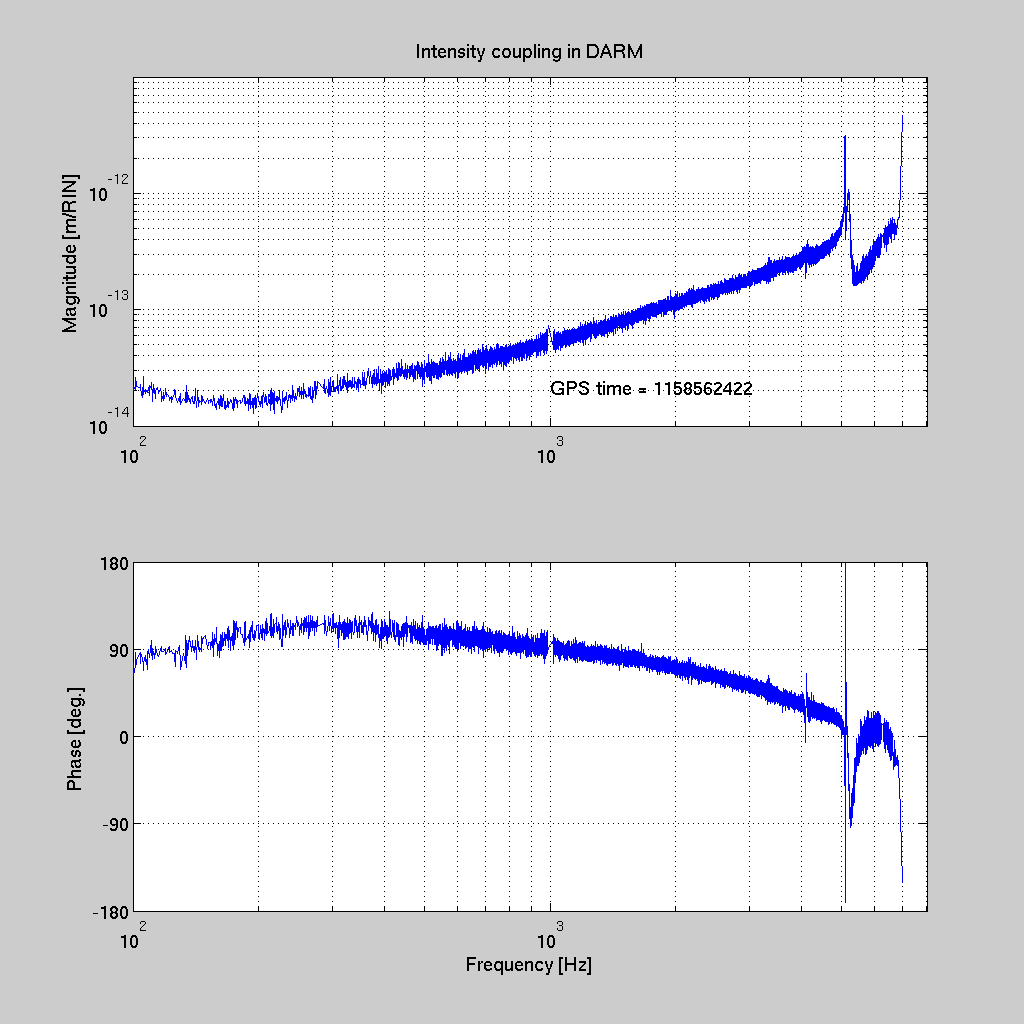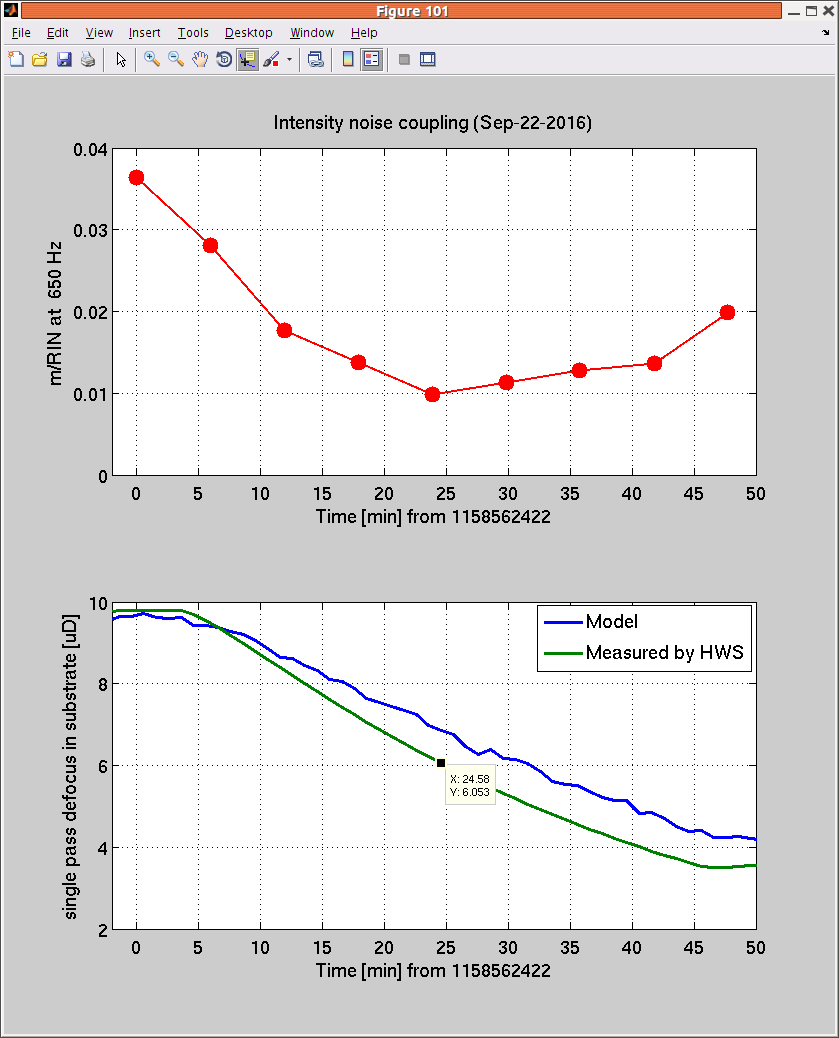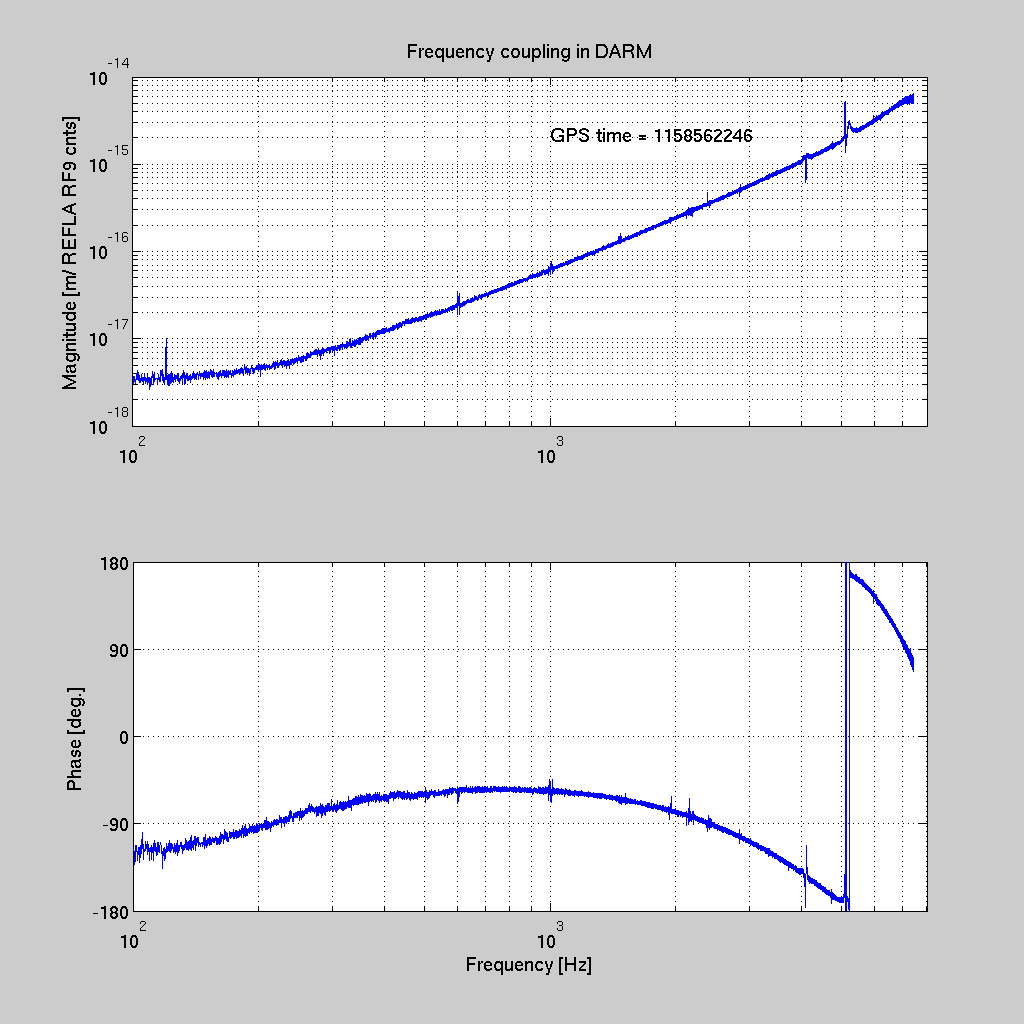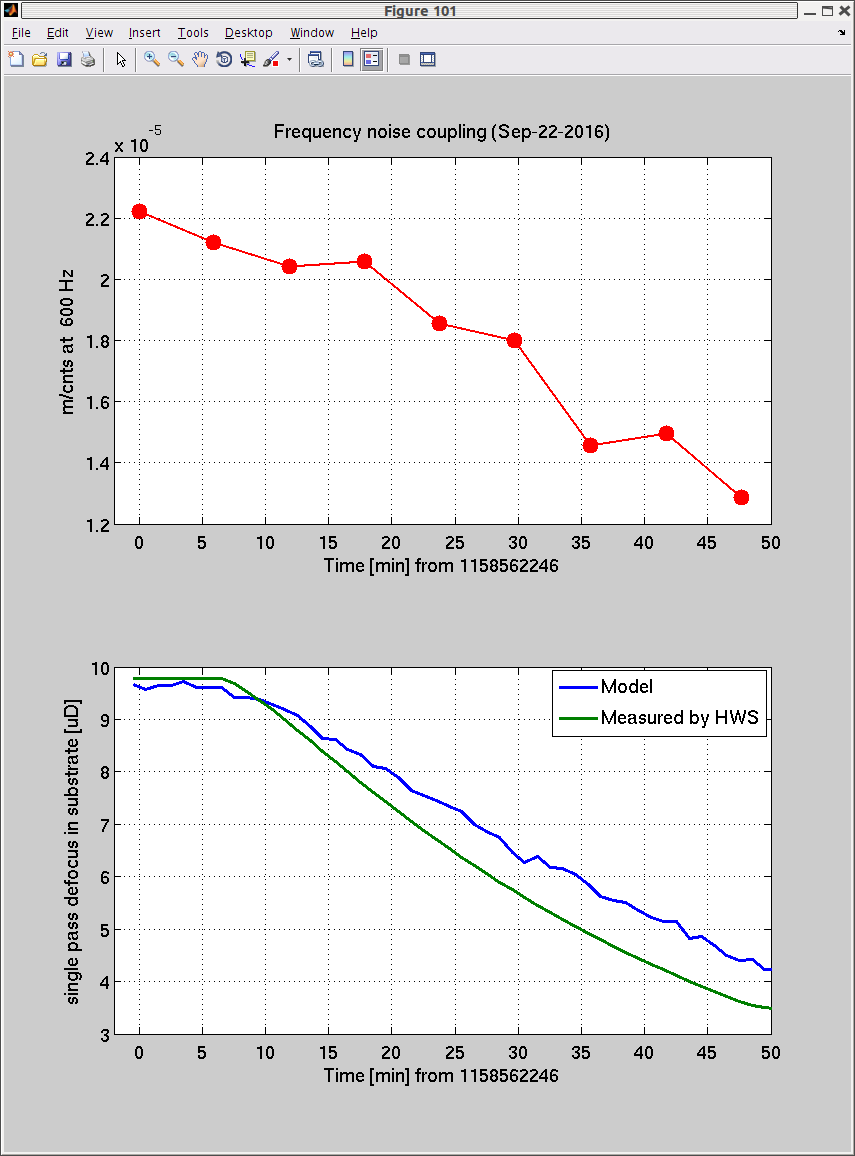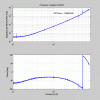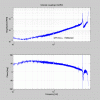According to the TCS measurement we did last night (29901), a good CO2X power to minimize the intensity noise coupling is 240 mW. This should give us an additional factor of 3 suppression.
For the frequency noise coupling, we did not reach an optimum point, but with the240 mW CO2X, it will give us a small supression of 20% or so.
[The test]
- 2016-09-22 6:57, CO2X: 400 mW --> 0
- 2016-09-22 7:40, CO2X: 0 --> 230 mW
See the first attachement or a screenshot of trend below for how things were stable during the measurement.
[Intensity noise couplings]
As seen in the animation below, the transfer function did not change its shape. As the defocus on ITMX compensation plate changed, the overall scaling factor changed.
To show that we passed an optimum point (where the coupling is minimized almost all the frequencies), the following plot is the evolution of the transfer coefficient at 650 Hz.
The minimum point was achieved at t = 24 min. or so where the defocus dropped by about 4 uD from the initial value. According to the recent calibration of the CO2X actuator efficiency (29648), this change corresponds to (-4 uD) / (25 uD/W) = -160 mW. Because the initial CO2X power was 400 mW, the optimum point in terms of the CO2X operating power is 400 - 160 mW = 240 mW.
[Frequency noise coupling]
Here are the same analysis for frequency noise. Similarly to the intensity noise coupling, the shape of the transfer function did not change during the measurement.
Similarly to intensity noise coupling, the frequency noise coupling also decreased. See the plot below.
The coupling monotonically decreased as a function of time. In the end the coupling was lower than the initial value by roughly a factor of two.
